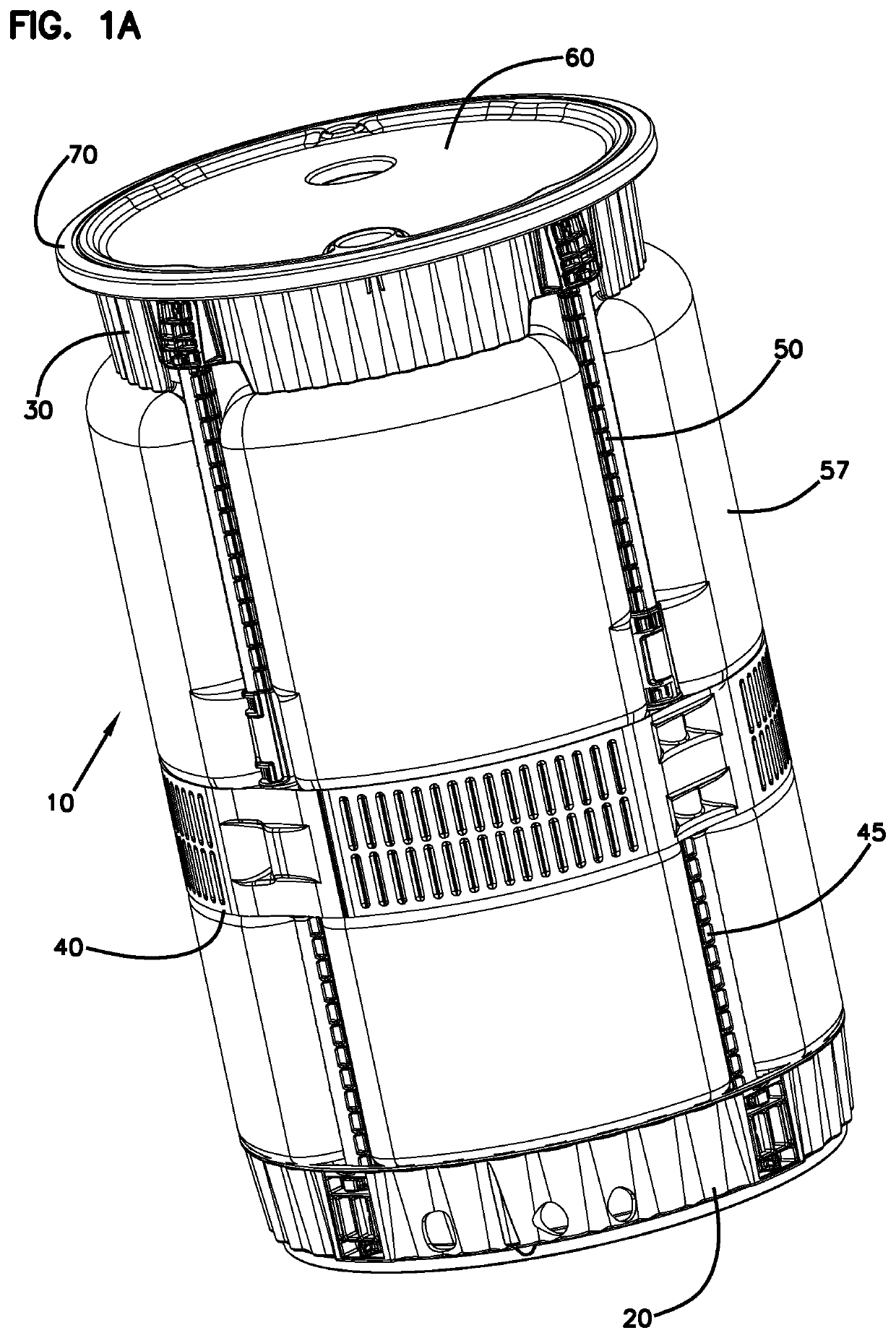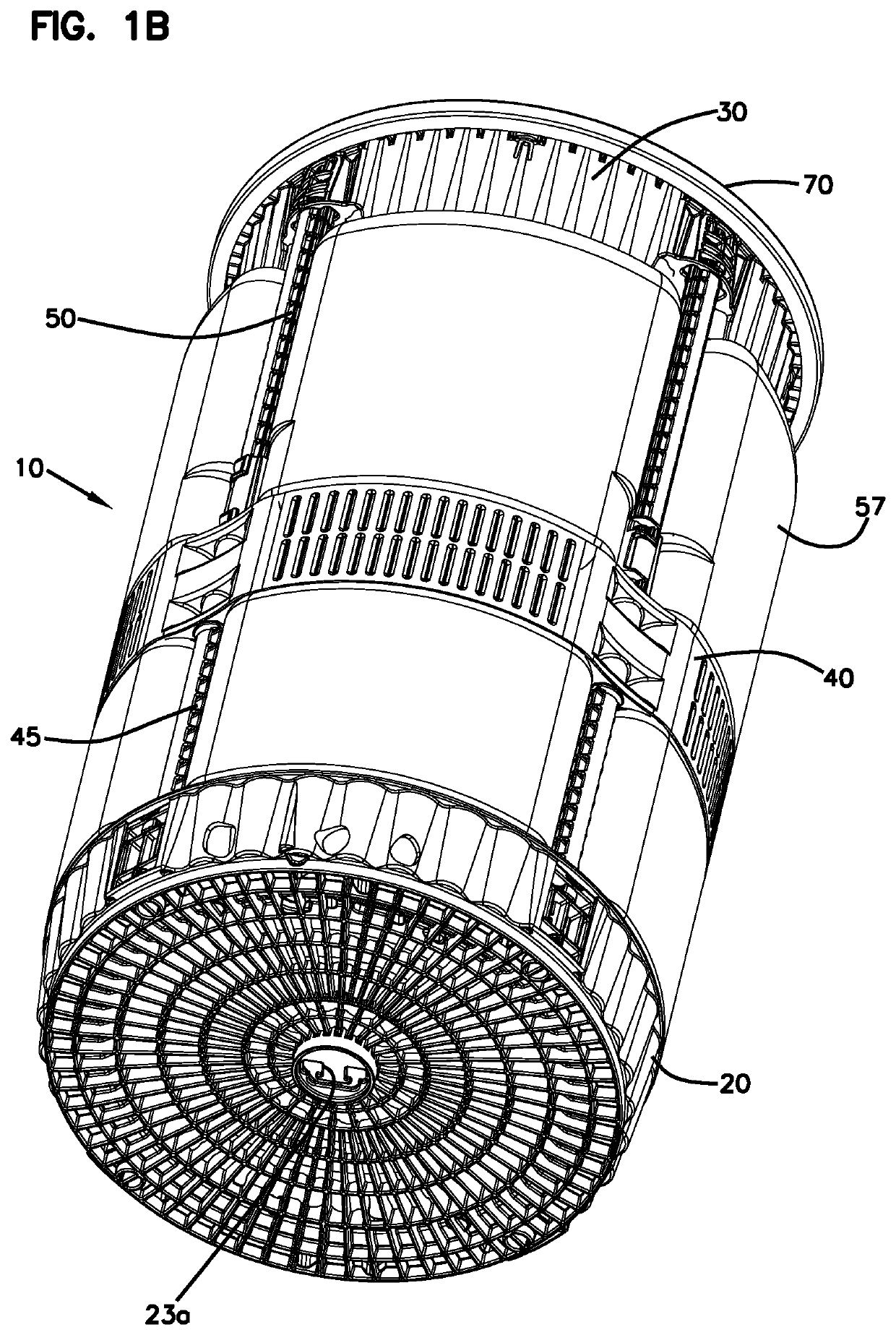Collapsible bulk material container
a container and bulk material technology, applied in the field of rigid, collapsible, recyclable rigid framework shipping containers, can solve the problems of unfavorable environmental protection, unfavorable environmental protection, and possible bursting of the drum, and achieve the effects of convenient replacement and recycling, significant shipping cost savings, and convenient handling
- Summary
- Abstract
- Description
- Claims
- Application Information
AI Technical Summary
Benefits of technology
Problems solved by technology
Method used
Image
Examples
Embodiment Construction
[0078]This invention provides a highly reliable container assembly for bulk materials that is rapidly configurable between an operable upright assembled configuration and a compact collapsed modular configuration. In its collapsed configuration the container reduces in size to a compact module that is ideal for shipping, storage, and handling and also minimizes damage to and loss of loose component parts of the container. In its assembled configuration, the container assembly provides a container for bulk materials widely ranging from solids, to powder, to semi-solids, to granular materials, to slurries, and to liquids. The assembled container provides superior bulge resistance and stacking strength and imperviousness to moisture and is particularly suitable for reuse. The container assembly is very cost effective to use, store, and reuse due to its superior strength and collapsibility features and is particularly attractive for handling, storage, and shipment in its collapsed confi...
PUM
 Login to View More
Login to View More Abstract
Description
Claims
Application Information
 Login to View More
Login to View More - R&D
- Intellectual Property
- Life Sciences
- Materials
- Tech Scout
- Unparalleled Data Quality
- Higher Quality Content
- 60% Fewer Hallucinations
Browse by: Latest US Patents, China's latest patents, Technical Efficacy Thesaurus, Application Domain, Technology Topic, Popular Technical Reports.
© 2025 PatSnap. All rights reserved.Legal|Privacy policy|Modern Slavery Act Transparency Statement|Sitemap|About US| Contact US: help@patsnap.com



